
For some people, having more time to engage with nature has been an unexpected upside of lockdown. Prof Sekepe Matjila from Unisa’s Department of African Languages, an amateur ornithologist, is one of the many Unisans who appreciate that it’s much easier to hear the songs, twitters and warbling of our feathered friends when there are fewer cars on the roads.
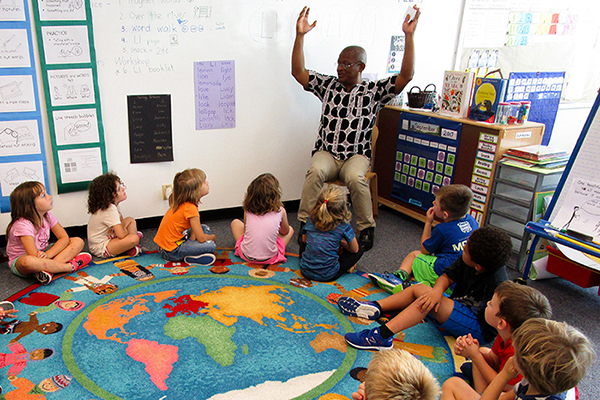
During his stay as one of the Annenberg Scholars for the 2017-2018 academic year at Principia College, US, Prof Sekepe Matjila (Department of African Languages) had the chance to tell his tales to lower schoolers, who loved listening to the stories from South Africa. In his view, reviving and rejuvenating oral traditions is crucial to maintaining cultural continuity and pride.
And on a more global scale, Matjila says, traditional folklore has much "to teach our urbanised world about appreciating, learning from, and caring for nature." An amateur ornithologist, Matjila especially loves tales that feature birds - the expansiveness and freedom they symbolise that lifts human thought and aspirations higher.
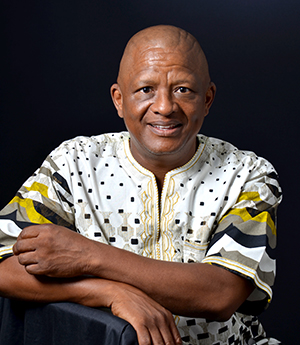
Prof Sekepe Matjila, Department of African Languages
When I was a six year old boy I stayed with my grandmother in the village. Every afternoon before sunset I visited a beautiful place in the bush called Motlhakamotala, a wonderful lush pasture. The grass was always green there and the ponds overflowing. This was my favourite spot when I was a little boy. When I was hurt, frightened or troubled, I went there alone to clear my head and to listen to the shrill voices of the birds. I learned about birds such as Manong, Dintsu, Mmamasiloanoka, Dikgori, Mosweleswele, Korwe and Mhiri from my maternal uncle who always found me at Motlhakamotala when he was looking for cattle. He used to ask the same question when I looked troubled:
A o tshwere legong la ga Mmamasiloanoka fa o wetswe ke molato o o kanakana?
"Are you carrying Hamerkop’s piece of wood with all these troubles around you?"
My uncle was a hunter and knew the names of many birds in the surroundings. He also taught me that Lethejane and Lethetswana are one and the same bird with different spellings. People in different areas use different names to refer to the same bird. He also mentioned that tlhantlhahane (crested barbet) is known as tontobane in some other areas.
This, said Matjila, was when he started observing and appreciating birds. "I have studied songs of castigation and glorification about birds; I have studied the names of birds and their relationship to man."
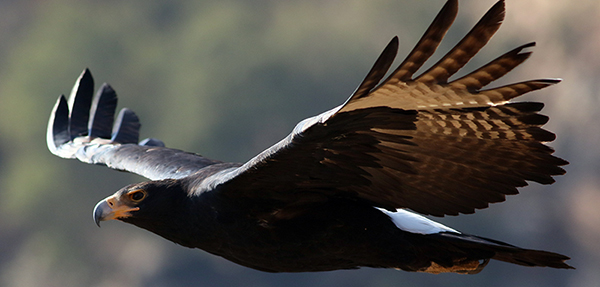
Image source: Derek Keats: Verreaux's eagle (Aquila verreauxii)
Many years ago, all the birds gathered to decide which of them would be the king of the birds. They came in different sizes and shapes, big and small, beautiful and ugly.
After many days of debate, they decided that they would hold a contest. Whichever bird could fly the highest would be the king of the birds.
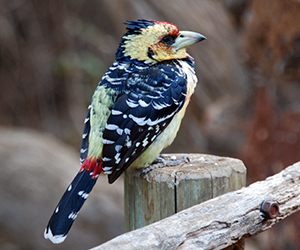
Image source: VJ O’Sullivan: Crested barbet (Trachyphonus vaillantii)
On the day of the competition, all the birds took off into the air. Tlhantlhahane (crested barbet) quickly tired, her fragile wings unable to carry her far. Tlhantlhahane had to come up with a quick plan before it was too late. In short order, only the strongest of the eagles still climbed into the sky.
This eagle climbed higher and higher, until the last of his competition gave up and returned to earth. He smugly congratulated himself and began his descent. He was exhausted from the competition and needed to recover. As he was falling, he heard a small bright voice above him calling "I am king! I am king!" It was Tlhantlhahane, fluttering above him. She had carefully, quietly, hidden among his feathers, and ridden his back into the sky. The eagle was furious, but he was too exhausted from the competition to fly higher.
When Tlhantlhahane landed, the small birds cried in joy and surprise. They were sure that one of the larger birds would win the competition, but had been too afraid to complain. The large birds were furious. "You only won through trickery and cunning, and that’s not fair," they complained.
"Eagle would have won through strength and brawn. Why is that better than cunning? If you have your doubts name another challenge and I will win once more," the Tlhantlhahane replied.
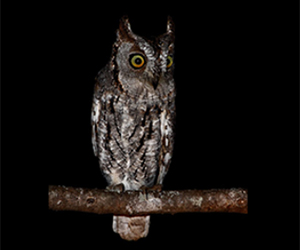
Image source: Alan Manson: African Scops owl (Otus senegalensis)
Many big birds were so angry and dismayed to see Tlhantlhahane arriving last to claim the crown. After sentencing Tlhantlhahane to death for cheating, they requested Morubisi (owl), to guard her whilst they were preparing a fire to burn Tlhantlhahane. Even with her big eyes, Morubisi failed to see her flee. All the blame was put on Morubisi. Even to this day she is nocturnal because she still has to be charged for negligence. The large birds were furious and decided that Tlhantlhahane could be the king, but she would never rule them. They each took turns standing guard at the hole, waiting to kill Morubisi for her negligence.
While Tlhantlhahane was not permanently ostracised, the owl was. Her fate seems to symbolise those unfortunate people in life who, due to certain natural shortcomings on their part, such as being inarticulate or slow-witted, may be easily sacrificed in order to save those who have proper connections. Justice is not blind, but it may be tainted, in the interest of some, perhaps because of their wit.
In the stories, people find similarities between their own behavioural traits and those of birds, including gluttony, envy, insincerity, dishonesty and egocentrism. In the course of observing their demeanour, moral lessons are learned. Just like characters in folktales, human beings have inescapable choices to make, impediments to triumph over and trials to overcome. Undesirable things happen. How does one handle life’s intricacies?
Southern African bird proverbs - how many do you know? |
||||
Africa’s creation of proverbs about birds is indicative of their understanding of birds’ qualities, characters and behavioural tendencies. The Africans have observed the day-to-day routines of birds and learned their tasks and responsibilities. These thoughts inspired them to create oral sayings about birds. They took what they learnt and stated this in colourful illustrative ways to express the truth or useful thoughts. The aim of creating proverbs was to convey to future generations societal experiences and knowledge based on the observation of the behaviour of birds. |
||||
Setswana |
IsiZulu |
IsiNdebele |
IsiXhosa |
English |
| Ntsu o bolaya ka mosumo wa ntlha. | Ukhozi lubulala ngokugadla kokuqala. | Ikhozi libulala ngomlomalo. | Ukhozi lubulala ixhoba lalo ngesithonga sokuqala. | An eagle kills with the first strike |
| Sa ntsu ke se se mo dinaleng. | Okuzingelwa ukhozi yikhona elikuphatha ngezinzipho zalo. | Okuzunywa likhozi ngikho ekubanjwa ngeenzipho zalo. | Ixhoba lokhozi yiloo nto luyibambe ngeenzipho zalo ngalo mzuzu. | An eagle’s prey is the one it carries in its claws. |
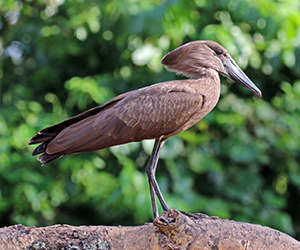 Image source: Charles J Sharp: Hamerkop (Scopus umbretta umbretta) |
||||
| Bopelonomi bo bolaile Mmamasiloanoka. | Inyoni yabulawa umusa wayo. | Inyoni yabulawa kukuba nomusa. | Intaka yabulawa zizibele zayo. | Hamerkop was killed by her generosity. |
|
Image source: Winfried Bruenken: Kori bustard (Ardeotis kori Burchell) |
||||
| Kgori e bona lee, lerapo ga e le bone. | Inyoni iyalibona iqanda, kodwa hhayi isicupho. | Inyoni iyalibona icanda kodwana ingasingunoqhaka. | Intaka iyalibona iqanda, kodwa hayi umgibe. | Kori bustard sees the egg, but not the trap. |
| Bana ba kgori monokana o seng, Tshika e ya baneng e a kgaoga. | Inzalo yenyoni ayiwona amalungu endoda ethize. | Isibeletho senyoni akusimalungu athileko wendoda. | Inzala yentaka ayinamnombo. | The offspring of the Kori bustard are members of no family. |
|
Image source: Bernard Dupont: Red-crested korhaan (Lophotis ruficrista) |
||||
| Mosweleswele o mephuphutho mebe o iphatlha ka diphuka tsa one. | Uhlobo lwenyoni enkulu enyakazisa amaphiko ayo ngokuziqhayisa iyazixhopha yona. | Inyoni esikinya amaphiko iyazikhakhazisa ngokwayo. | Intaka ezivuthulula amaphiko, izihluba ngokwayo. | Korhaan that shakes its wings indecently dazzles itself. |
|
Image source: Charles J Sharp: African grey hornbill (Tockus nasutus epirhinus) |
||||
| Korwe ga ke je ke bapalela tsetse. | Insingizi iyazithiba ukudla ukuze yondle umkayo namaphuphu. | Inyoni iyazidima ukudla ukwenzela ukondla abentwabayo. | Intsikizi iyakuzivimba ukutya ukuze yondle umfazi nabantwana bayo. | Hornbill will deny itself food in order to feed the wife and children. |
|
Image source: Alan Manson: Lemon dove or cinnamon dove (Columba larvata) |
||||
| Kunkuru leeba le letona ga le rutane le le namagadi mmokong. | Ijuba lesilisa alisoze lafundisa elesifazane ukuba liloloze, ezibini. | Izuba eliduna angeze lafundisa elisikazi ukukwakwazela esidlekeni. | Ihobe alisokuze lifundise ihotyazana ukucula/ukuntyiloza/ ukutsholoza edotyeni. | A male dove would never teach the female one cooing in the chaff. |
Thanks to C Zwane, M Mokoena, and M Bomvana for helping with the IsiZulu, IsiNdebele and IsiXhosa translations. |
||||

* Compiled by Sharon Farrell, Editor, Department of Institutional Advancement
Publish date: 2020-07-23 00:00:00.0